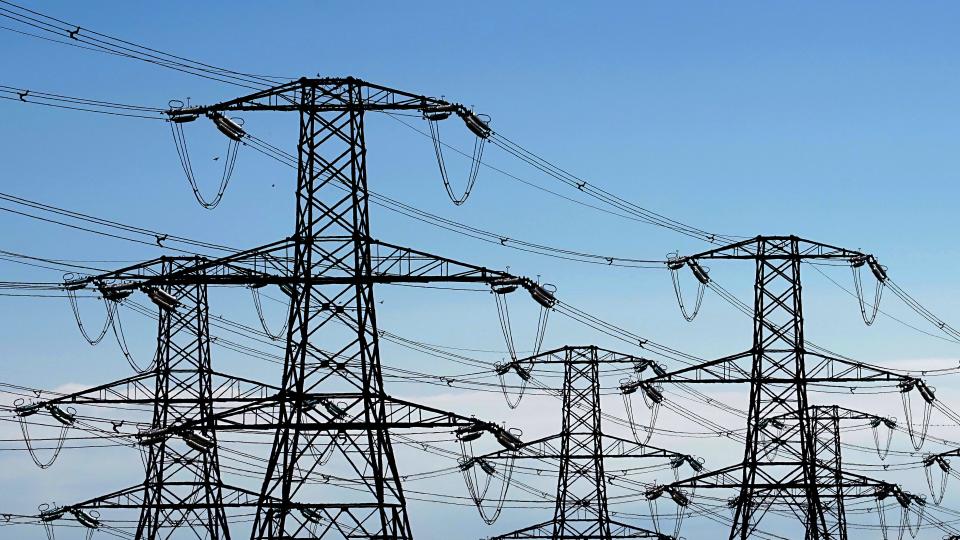Less risk of Britain losing power next winter than last, says grid operator

Britain is less likely to lose power this winter than it was last year, according to the company that runs the grid.
National Grid’s Electricity System Operator (ESO) said on Thursday that it expects power plants, wind farms and other generation methods to be able to provide more than enough power to meet demand.
In an early outlook ahead of winter it said the grid would have an average margin – the difference between supply of electricity and demand for it – of 5.6 gigawatts (GW) this coming winter, higher than 4.4 GW last year.
That gives the system a margin of 9.4%, up from 7.4% last year, meaning the period when demand might outstrip supply is just 0.1 hours.
The increased margins are in part because of improved capacity, thanks to a new 765km high-voltage cable that connects the UK’s electricity network with Denmark.
The cable, called an interconnector, is known as the Viking Link, and started transporting wind power between the two countries in December.
Kayte O’Neill, the ESO’s chief operating officer, said the operator will have “sufficient margins” throughout the winter.
“Factors such as increased interconnector capacity, new gas generation, growth in battery storage capacity and increased generation connected to the distribution networks are contributing to higher margins than last winter.
“Global energy markets are showing signs of stability, but uncertainties remain and, therefore, as a prudent system operator we remain vigilant, continuing to monitor potential risks and working closely with our partners to establish any actions necessary to build resilience.
“We are continuing to meet the challenge of reliably operating a changing electricity system as new technologies, and diverse forms of capacity, contribute to security of supply.”
The continent’s energy system has been forced to reinvent itself in recent years, faced with potential gas shortages after Russia’s full-scale invasion of Ukraine.
The ESO added that “uncertainties still remain” when it comes to market resilience in the face of potential further supply side shocks.
The forecast is designed to give organisations across Great Britain’s energy industry time to prepare for the coming winter.
It said that while there is expected to be enough capacity to meet demand, the ESO also expects there may be “some days where we need to use tools in our standard operational toolkit, including use of system notices”.
System notices are a routine practice. They happen when the operator cannot match supply and demand through the normal mechanisms, and sends a formal message to the electricity market to let companies know what it needs.
Jess Ralston, head of energy at think tank the Energy and Climate Intelligence Unit, said: “Some more wiggle room in electricity supply this winter proves that the UK’s net zero transition is delivering reliable power, increasingly from renewable sources like offshore wind.
“We’re expecting to see the last bit of coal generation ahead of the winter as the last plant shuts.
“The fly in the ointment would be more volatility in wholesale gas prices. Many analyses, including from the OBR (Office for Budget Responsibility), have pointed to the risk of gas dependence, including the burden it could add to national debt.
“Anyone who’s paid an energy bill in the past couple of years also knows what that looks like.
“With the price of North Sea gas set by international markets and reserves already running out, more renewables, insulating homes and switching to heat pumps will do much more to ensure the energy we use increasingly comes from within our borders.”
In a separate update, National Gas, the company that operates the gas system, said it is embarking on its biggest summer of maintenance and upgrades in recent years.
The operator said investment is up by one-third compared to last year over the summer, as it seeks to make sure Britain’s vast 7,600km network is fit for another winter.
Ian Radley, director of system operations at National Gas, said: “This investment will ensure our gas network remains match-fit to transport the energy Britain needs for the coming winter and beyond.
“Continuing to decarbonise GB’s energy system in a way that is both secure and affordable will require industry and government to continue to work closely together, and we are proud to continue to play a critical role in this national endeavour.”

 Yahoo Finance
Yahoo Finance 